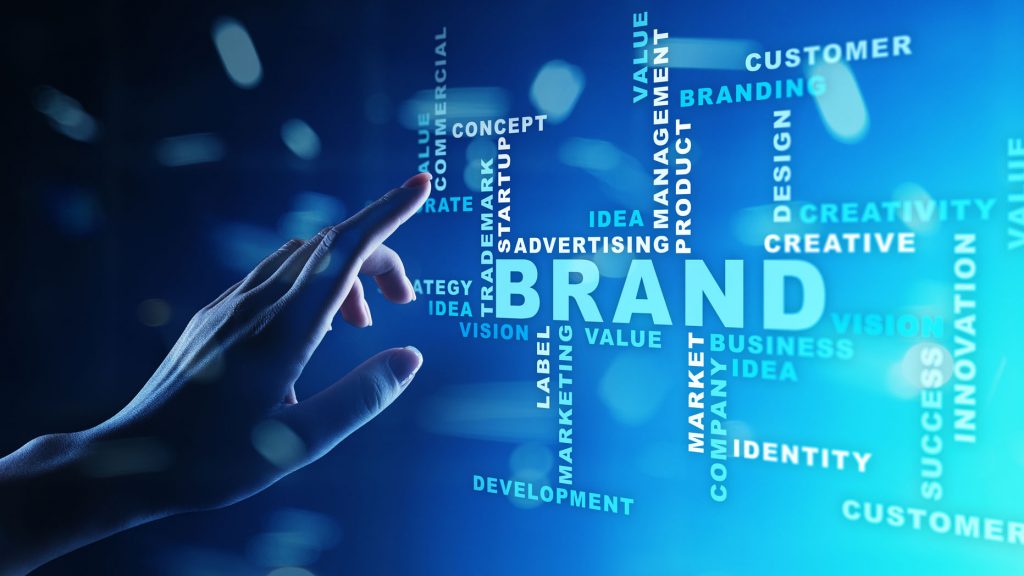Your branding is a representation of your story, who you are and why you exist in the world. As a business, it’s crucial to define your brand, in a way that’s clear and distinct in the minds of your customers. This is especially crucial during the early stages of a brand’s life span.
A brand has a life cycle and will change, morph and evolve over time, although the core fundamentals of what your brand represents will stay the same. Whether you’re creating a new brand from scratch or developing an existing brand, it’s crucial to ensure your brand stays relevant with its customers over time.
A great brand must impact, engage and resonate with its customers over time, adapting to the changing landscape of customer needs, expectations and competition.
Today we look at what it takes to create a great brand that stands the test of time.
What Is A Brand?
A brand can simply be defined as an experience for its customers.
Why Is Branding So Important?
1. Your Brand Is Your Story
A brand represents your story and the reasons ‘why you do’ whatever it is that ‘you do’ – whether that’s producing soft drinks, cars, clothes or technology. People tend to buy from brands that have a compelling story and a greater underlying reason of ‘why’ they are in business. “Great companies communicate from the inside out”, rather than telling us what they do, they tell us why they do it – Simon Sinek.
Developing a great brand takes time and hard work. Brand development is an iterative process based on strong market research, understanding customer needs and how you’re able to meet them.
2. Your Brand Is Your Competitive Advantage
One of the main reasons why branding is so important is because a great brand is a strong competitive advantage – hence the term ‘brand equity’. It goes a long way towards developing customer loyalty, customer retention, and growth over time, especially in markets where a customer can choose many other products to go with.
3. Your Brand Is Your Customer’s Reason To Choose You
A great brand is often the reason why a customer chooses to buy from you, time and time again, rather than your competitor. A great brand can trump more logical decision factors such as a product’s price, quality and features, especially in markets where there is little differentiation between what’s on offer.
Imagine if you had a choice between Coca-Cola in a branded bottle and Coca-Cola poured into a generic brand Cola bottle, yet you weren’t told they were actually the same liquid.
- Which one would you choose and why?
- How much more would you be prepared to pay for the branded bottle?
- What are the feelings you have around Pepsi, Fanta, Sprite compared with Coca-Cola?
- How about comparing a soft drink with plain water – where both essentially deliver the same core experience of quenching thirst?
Experiments in psychology show that we tend to value a great brand more than its intrinsic product, hence we’re willing to pay more and remain loyal to that brand.
4. A Great Brand Can Beat A Great Product
Soft drinks are more or less homogenous products, with many similar flavours and substitutes available on the market, all providing the same solution – taste and hydration. Having said that, soft drink brands maintain a strong competitive advantage over each other. Although their products don’t vary much, their brand perception, story and the experience they deliver goes far beyond the taste of the product.
Coca-Cola promises an experience of fun, excitement and summertime good vibes. It’s associated with youth, fun, summer and outdoor activities which tends to go hand in hand with a situation where you may find yourself needing to quench your thirst. Hence, Coca Cola does a better job than most soft drink brands of delivering the perception of a better experience with its product, should you find yourself in the situation of needing a thirsty drink. In those split seconds of need where you make a choice between brands, the power of a brand tends to influence our choice significantly.
What Makes A Great Brand?
As mentioned earlier a brand is an experience for its customers. There are several factors that separate great brands. Great brands tend to provide a unique experience that distinguishes them from their competitors. They do this by creating and associating a strong sense of emotional attachment with their customers’ mindset. Great brands create brand equity, the emotional drive within their customers to keep coming back. They tend to do a far better job to retain customers over time and help win new customers by telling a more compelling story.
1. A Well Defined Brand
A well-defined brand is one that has been carefully planned, researched and designed around its customer’s needs. The result is a brand that defines itself within an instant in the mindset of its customers – communicating its story, values, beliefs and the reason why it exists.
A well-defined brand appeals to a target market, telling those customers the core reasons why to buy, what to expect and how to feel. It creates a powerful experience that impacts, sticks and resonates deeply with its target market, keeping customers coming back for more.
2. Strong Brand Identity
A brand in many ways is an identity and great brands have strong brand identities. As a business, the brand represents everything you do. It affects how your customers perceive you, their feelings and emotional associations with your company. It also affects how internal stakeholders perceive you, for example, most employees want to work for a brand that represents similar values to their own e.g. professionalism, quality and credibility. One that can be recognised easily by its logo, colours, text and associated meaning.
Ask yourself, what does my brand stand for?
3. Compelling Brand Story
Great brands tell a compelling story that wins over customers. Their story is simple, impacting and mostly conveyed on a subconscious level. A story that justifies why the company exists and how it serves its customers. For example, it could be a story of – trust (government), quality (BMW), style (apple), simplicity (google).
4. Complete Brand Experience
A great brand creates a unique, positive and complete experience for its customers. It achieves this through multiple touchpoints across its sensory representations, for example – visual (logo/colours/typeface), sound (its name when spoken/its meaning) and feelings (e.g. trust, certainty, quality). The result is a brand experience that differentiates it from its competitors, retaining existing customers and winning new customers.
“A brand is the intangible summation of a products attributes” – David Ogilvy.
5. Strong Emotional Meaning
Brands evoke emotion and make us feel a certain way about them. They achieve this by bypassing our logical thinking processes and instead create instant associations on the deeper emotional level. For example, a brand’s colour tells its own story, making us feel a certain way – the colour blue (simple, easy, calm feelings) vs the colour red (heat, urgency, call to action).
This is crucial to understand since it’s been shown that emotions tend to drive our decision-making process more so than logic.
“A brand is not just a logo, an identity or product, it’s a person’s gut feelings about that product” – Marty Neumeier.
6. Aligned Customer Perception
Brands are a subjective experience and are often interpreted very differently, meaning different things to different people. The market’s perception of your brand is the ultimate reality, regardless of how you see the brand, the way customers see it will ultimately determine your results.
Hence, the challenge is creating a well-aligned brand that reflects the reality of your customers. One which creates a consistent experience for its customers and is seen to meet their needs. This process starts with thorough and objective market research.
7. Brand Consistency
As humans, we are creatures of habit. We prefer certainty, stability and consistency over uncertainty. Clearly defined brands take advantage of these fundamentals. They are more likely to convey a consistent experience, story, message, feelings and set of universal truths to their customers than poorly defined brands.
What Are Examples of Great Branding In Practice?
Companies take branding very seriously, with Pepsi, BP and Nike regularly redesigning their brands to meet the evolving needs of their customers over time. In fact, Microsoft recently re-designed their Windows logo (literally a window) for an undisclosed sum estimated to be in the 10’s of millions of dollars.
Microsoft Windows Brand Redesign
In the case of Windows, spending so much money on a logo seems somewhat extreme, however, when you look at the new ‘window’ logo compared with the old logo, it’s easy to see why.
Windows realised it needs to re-brand on the spectrum towards simplicity. The development of a simpler colour palette (blue window panes vs previously blue, red, yellow and green), a flatter shape vs depth, overall a more simple, square, symmetrical feel with a twist of perspective. This really falls in line with the development of the wider software community as it’s changed over time to meet the needs of its customers. Customers expect software to be simple, user-friendly, effortlessly smart and overall an enjoyable experience.
Brands with complex shapes, colours and styles tend to evoke complexity, fear and decision paralysis, hence you can see similar principles in place with other software platforms like Google, Facebook, Salesforce, Twitter, Shopify, Amazon and many more.
How to Start Creating Your Brand
Creating your new brand or re-imagining an existing brand can seem complicated and daunting, however, it tends to flow easily once you understand the fundamentals around your business, customers and market.
Key considerations
Here’s a checklist for getting started with branding.
1. Market research
Take the time to understand your customer, their needs, problems, feelings. How can you best associate your brand as the go-to solution in your customer’s mind? A complete guide on Market research and a download template can be found here. More information on our Hubspot partnership – Solutions Partner.
2. Define your brand
Take the time to ideate, brainstorm and carve out what your brand stands for. The brand identity will come to define your marketing activities and everything you represent as a business. Focus on the reasons ‘why you do’ rather than ‘what you do’. What do you stand for? What is the core message, values, feelings and personality you are trying to convey to your customer?
3. Brand Strategy
Once you understand your customer and define your brand, it’s time to create a strategy on how the brand is represented in the market. Everything from its logo design, website, advertising and marketing activities should reflect the brand’s identity.
4. Brand Name
Focus on a name that is simple, short and smart. Consider how customers will use the name, for example, is it easy to say, easy to remember and emotionally evocative?
For inspiration or to brainstorm some ideas, try using a Business Name Generator. You might find a winner!
5. Visual Identity
It’s usually smart to speak to a designer about the visual elements of your brand. Having said that, it’s important to communicate the brand identity since you are the expert on that and they are the expert on design. Once a designer understands your vision they can go about creating a logo style, design, typeface, iconography, graphics, colour palette and usage guidelines that reflect the intention of your brand.
So tips, tricks and assistance for one of our partners, 99designs can provide additional information here.
Summary
Branding is one of the most important and preliminary considerations for most companies. It takes time, work and iterations to fine-tune. It’s something that evolves over time with the changing landscape of competition and customer needs. Branding affects everything a company does and is perceived to do.
By understanding your brand fundamentals and clearly defining your brand identity it’s likely your customers will get the message, associate strong meaning and have great reasons to choose you.






